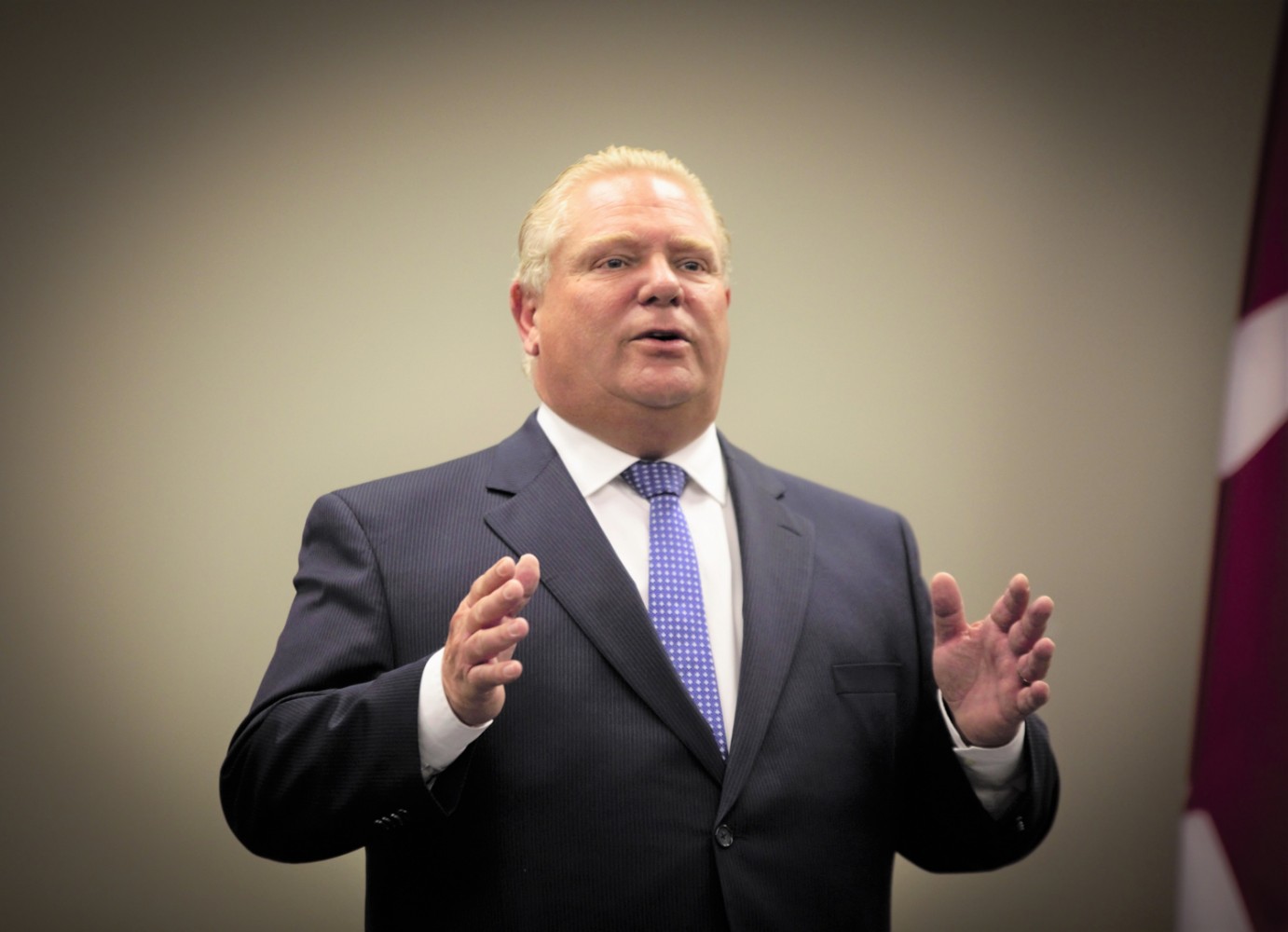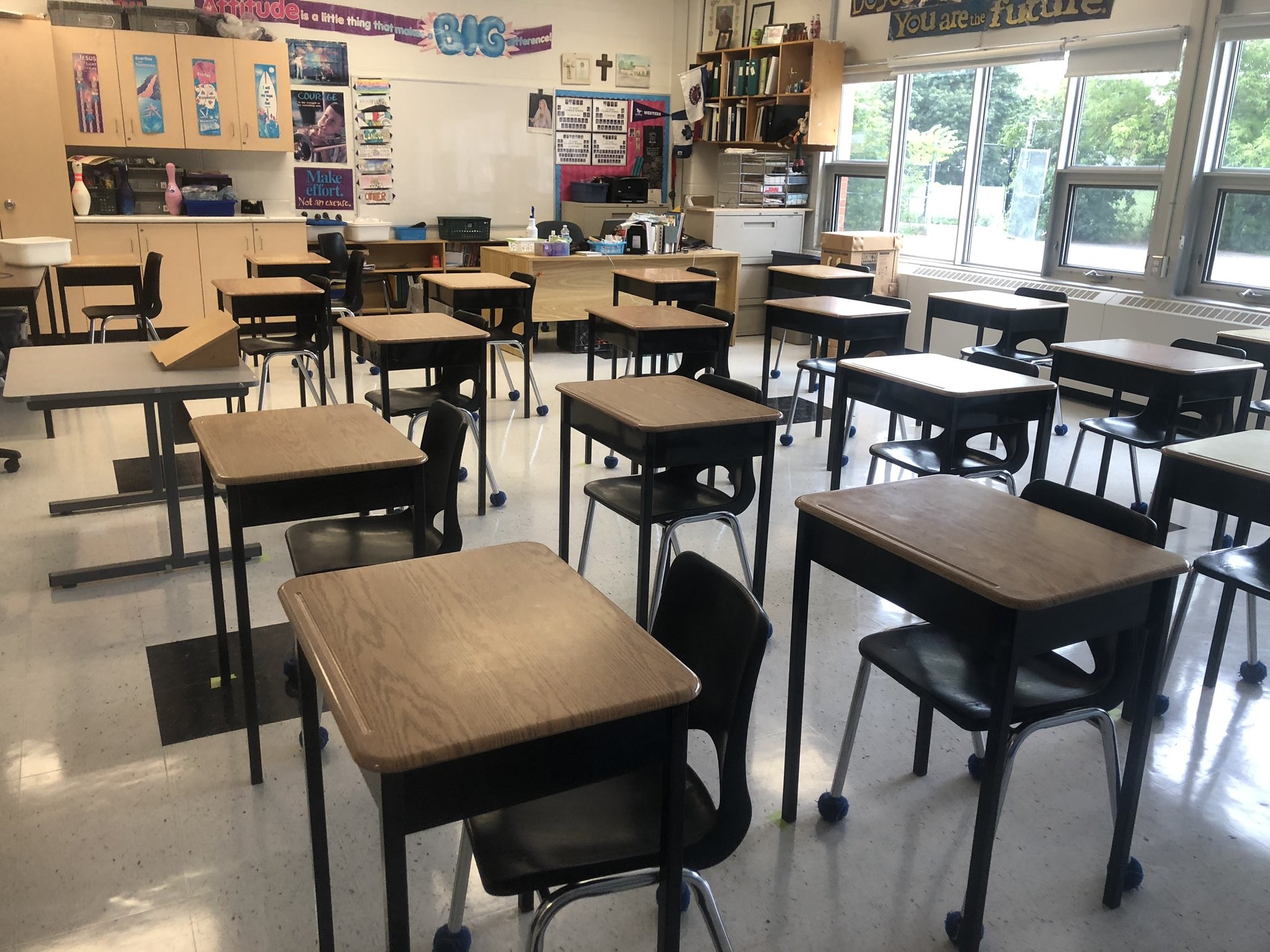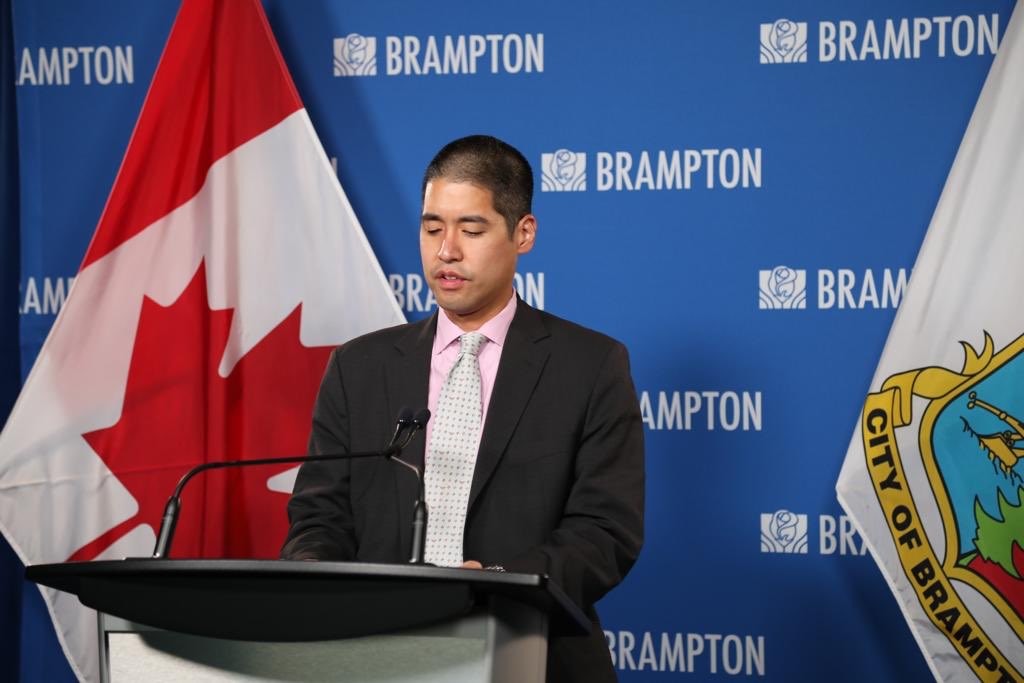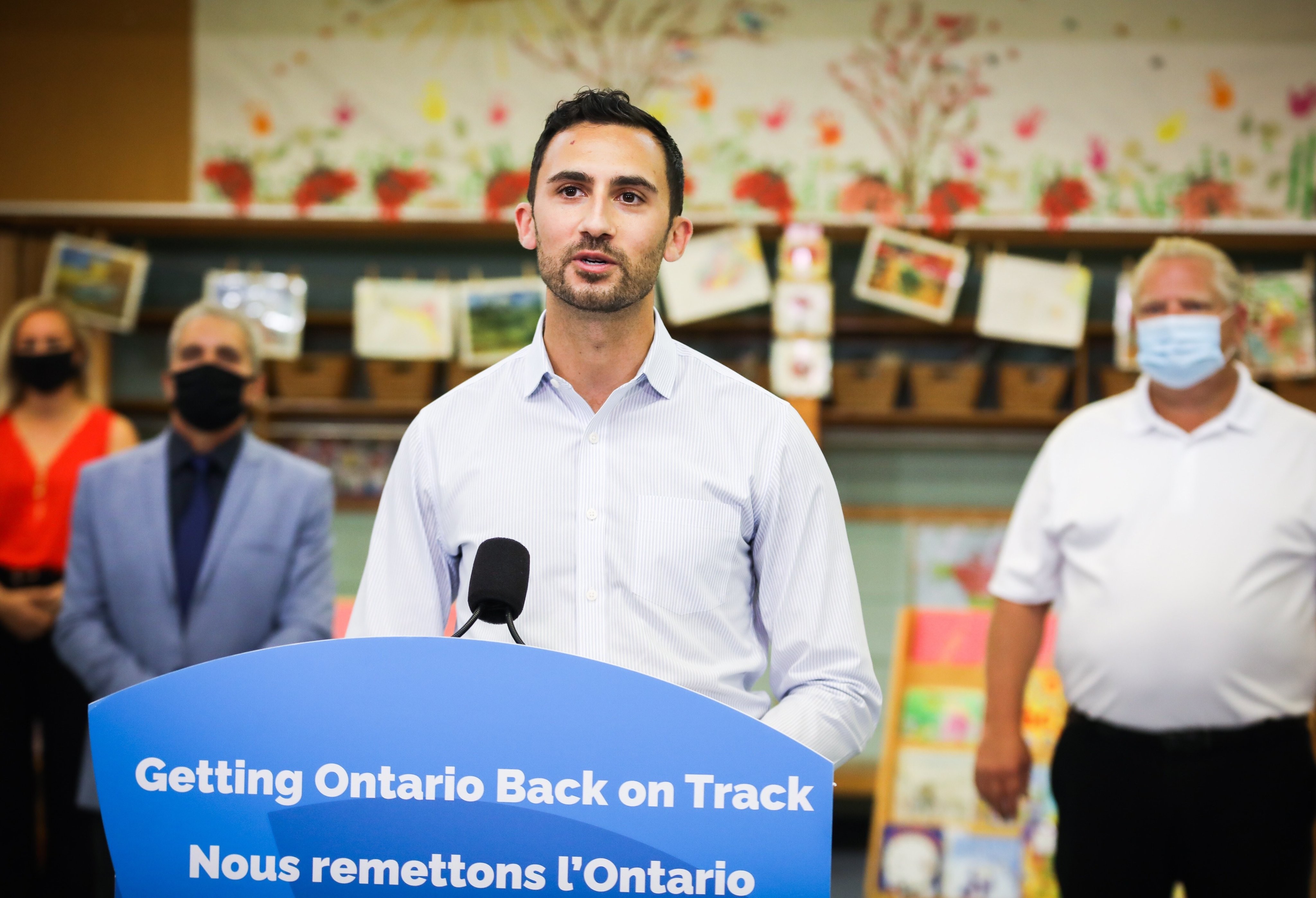
Ford gets an F: Peel’s top doctor forced to close all schools down
The news came as no surprise to many across Peel, angry and frustrated over Doug Ford’s hopeless management of the pandemic in the region: Schools will be shut down as of Tuesday for at least two weeks.
The PC government has consistently failed to address the obvious problems in the province’s hardest hit region and it has consistently suffered as a result.
After failing to protect essential workers, ignoring widespread calls for paid sick days, botching the vaccine roll out in Peel and neglecting educators who have for months called for better safety measures in Peel schools, Dr. Lawrence Loh, the Region’s medical officer of health, was forced to make the difficult decision Monday, sending many of those same families forgotten by Ford scrambling to figure out what they will do come Tuesday, less than 24 hours after the sweeping shutdown was announced.

The closure of schools across the region is yet another sign that Premier Ford and the PC government's handling of the pandemic has not worked for the residents of Peel.
Students in Brampton, Mississauga and Caledon will shift to mandatory online learning Tuesday as Peel continues to report the highest daily case rates in the province.
Peel Public Health (PPH) called for the closure on Monday afternoon, impacting more than 235,000 students across 419 schools. The Peel District School Board (the second largest school board in Ontario), the Dufferin Peel Catholic District School Board, the Conseil Scolaire Viamonde, and Conseil Scolaire Catholique MonAvenir, two French first language school boards, will be affected.
All private schools and April break camps will also shut down along with all licensed childcare programs (except for those under the age of six who don’t attend school). The closure will last for two weeks, including the already planned week off for the late March break but further extensions are possible.
“Ahead of the long weekend our numbers have started to take off with the third wave. It’s taken off here because we were in grey-lockdown longer than the rest of the province,” Dr. Lawrence Loh, Peel’s medical officer of health, told The Pointer, shortly after making the difficult decision to enact his special powers under Section 22 of Ontario’s Health Protection and Promotion Act.

Dr. Lawrence Loh's decision to close schools comes as Peel is seeing its worst COVID-19 case numbers since January.
A press release from PPH indicates the “significant” case count increase in Peel and the spread of variants in the community played a role in the decision. The hope is the closure will allow any “chains of transmission” to break. On April 1, the PDSB reported 300 cases of the virus and shut down more than 200 classes and eight schools. The DPCDSB reported 100 confirmed cases, and 74 classrooms and five schools were closed.
On the same day, Peel reported its highest daily case count since January with 557 new infections, representing 37 cases for every 100,000 residents. In comparison, Toronto reported 28 new cases for every 100,000 residents.
The region’s public schools had been showing troubling signs for weeks.
Testing results provided to The Pointer by the Ministry of Education three weeks ago, showed that screening of 1,146 schools and almost 17,000 students and staff in Ontario as of March 12 resulted in a test positivity of 0.62 percent. The test positivity for the DPCDSB, in 32 schools and among 214 students and staff who were screened, for the same week was 3.2 percent, five times higher than the provincial rate. At the time, Peel’s Catholic board accounted for 26 percent of all school closures in Ontario.
Key indicators in Peel have continued in the wrong direction. Hospital ICU capacity was at 98 percent as of March 29, according to Peel’s latest weekly epidemiological report. This is well beyond the danger zone and means the region’s healthcare system can no longer handle any increased demand in its critical care system, which is now stretched beyond any limit usually seen.
Peel’s test positivity jumped to 9.6 percent as of March 27, Brampton’s was 13, meaning viral transmission is far out of control; 2.5 percent and below indicates adequate control of spread.
Despite Dr. Loh saying schools have been “safe when precautions are in place,” the closure illustrates how bad the situation in Peel really is.
“Kids, unfortunately, do spread the virus,” to teachers, families, and many others, Doris Grinspun, the CEO of the Registered Nurses Association of Ontario, told The Pointer.
She praised Dr. Loh for his actions and called on other public health leaders to make similar decisions. “I don’t know, quite frankly, what are we waiting [for] and we certainly shouldn’t be waiting for the Premier because the shutdown that he did… was nothing.”
On Thursday, Education Minister Stephen Lecce said schools would remain open and April break, shifted over from March to prevent travelling and gatherings, would continue as planned, calling the actions “critical for mental health and learning.”
That was when PPH started discussing the shutdown of all schools in Peel, according to Dr. Loh. With a shorter week (schools were closed for Easter Monday) “it made sense” to close them from an epidemiological perspective. “It adds another week where folks are out of the school setting," Dr. Loh said. Schools were already set to be closed from April 12 to 16 for the delayed Spring break.

Education Minister Stephen Lecce has been widely criticized on social media for his lack of action to address the spread of the novel coronavirus in Ontario schools.
A spokesperson from the PDSB told The Pointer in a statement its officials “respect the decisions made by Peel Public Health” to move learning online and their main focus remains the health of students and staff. “We remain grateful to staff, students, and families who have taken extraordinary efforts to change their routines and carry out collective actions to limit the spread of COVID-19 and keep our school communities safe.”
It’s unclear how the transition to online learning for all students will be carried out less than 24 hours after the order was brought down. Issues such as access to learning materials, organizing virtual platforms and coordinating education with those students who were already enrolled in online instruction will have to be addressed on the fly.
The Pointer recently reported that a rash of school closures in the DPCDSB recently was due to a combination of high infection rates and the lack of teachers willing to go into classrooms due to the risk.
Unions reported difficulty finding supply teachers willing to go into Peel schools because of the high rates of transmission.
The latest move is just one more angering reality in a region the PC government has neglected from the start of the Pandemic.
It gave Brampton just 1 testing centre compared to 17 in Toronto when the global public health crisis began.
Inadequate contact tracing resources meant PPH had to get help from outside the region, and as outbreaks mounted in industrial settings and other workplaces, Ford refused to adopt policies such as paid sick leave despite the advice of his own scientific advisors.
When a pharmacy rollout for the AstraZeneca vaccine was devised, Peel was ignored, left out of the 327 locations included in the original plan. Calls by some of Peel’s municipal politicians to prioritize educators and others forced to go to work everyday in the vaccine rollout have also fallen on deaf ears.
Now, families and students will suffer the consequences of a situation Ford and Health Minister Christine Elliott have failed to address.
Throughout the pandemic The Pointer has asked Elliott and her government why Peel has been neglected and what was being done to reduce its high infection rates. Elliott has said Peel would get the resources it needs.
In the late summer, when Brampton was reporting five times the infection rate compared to Ontario overall, Ford called the city’s pandemic situation, “broken” on September 4.
He never explained why it was broken and how he planned to fix the problem he helped create.
Loh’s hand was forced by the latest spike in viral transmission across Peel and he issued the Section 22 order under provincial legislation that gives him the special power. He said it was done after discussions with the Ministry of Education and other public health units, which might follow suit.
Grinspun said closing schools was a step in the right direction, but it’s not enough. Given April break is on the horizon, she’s concerned students will travel with their parents and cause the same problems that everyone was hoping to avoid in March. What’s needed is a complete lockdown and stay-at-home-order with “no movement” because variants spread faster, and make people more sick, compared to the original strain, she said.
In a letter, obtained by Global News, Dr. Loh called for similar actions. Co-written with the medical officers of health for Toronto and Ottawa, they advised a province-wide stay-at-home-order, noting Premier Doug Ford’s “emergency break” that put the province in a lockdown isn’t enough. Addressed to Dr. David Williams, Ontario’s chief medical officer, the letter asks the Province to review what businesses are defined as essential, lower capacity limits, have travel restrictions for regions in the province and implement paid sick days.
“A stay-at-home-order issued by the Province through an Emergency Order is necessary to prevent and mitigate large scale morbidity and mortality and irreparable strain on the health care system,” the letter reads.
Peel has been neglected at every turn. Despite being labelled a hotspot and remaining in a lockdown since November, it did not even receive its per capita allotment of vaccines based on equal distribution by population, only getting 6.7 percent of Ontario’s total distribution as of the third week of March, despite accounting for about 10.5 percent of the province’s population.
Municipal leaders and medical professionals said Peel should have been getting even more than its per capita share, to stop the high rates of infection in Ontario’s worst hit region.
Since being left out of the original pharmacy pilot, vaccine supplies to Peel have significantly improved.
As of April 5, the region has administered 203,846 shots; 179,680 were a first dose and 24,166 the second.
But the infection transmission during the third wave in Peel is now out of control, and vaccinations can not keep up. As a result, the future of education across the region for the rest of the academic year is now uncertain, and parents are once again left searching for answers, as the stops and starts continue.
Loh called for more vaccines in the letter to Williams.
“To augment the proposed public health measures, we are also requesting that every possible effort be made to rapidly secure more vaccines for Ontario and supports be put in place to ensure administration in the areas of greatest needs,” the letter reads.
For those hoping to avoid another school closure in Peel, it’s too little, too late.
Email: [email protected]
Twitter: @nida_zafar
Tel: 416 890-7643
COVID-19 is impacting all Canadians. At a time when vital public information is needed by everyone, The Pointer has taken down our paywall on all stories relating to the pandemic and those of public interest to ensure every resident of Brampton and Mississauga has access to the facts. For those who are able, we encourage you to consider a subscription. This will help us report on important public interest issues the community needs to know about now more than ever. You can register for a 30-day free trial HERE. Thereafter, The Pointer will charge $10 a month and you can cancel any time right on the website. Thank you.
Submit a correction about this story


